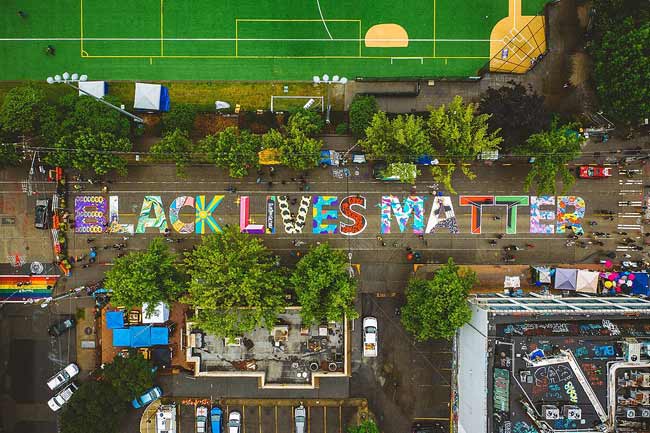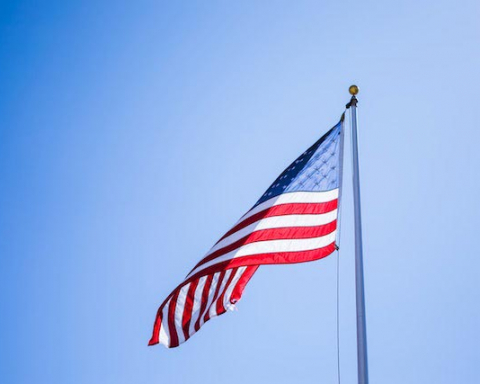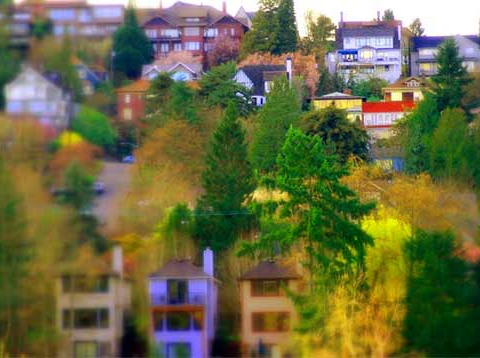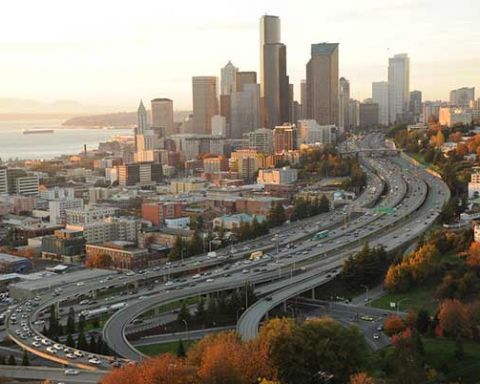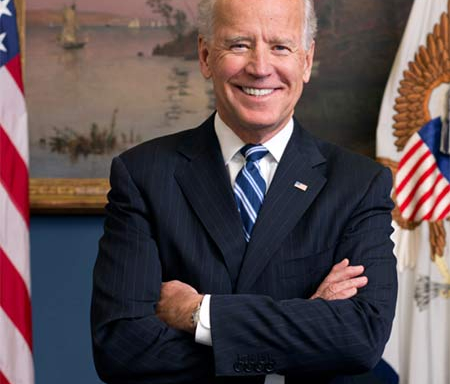An observation by Glenn Young who visited Seattle’s Capitol Hill Liberation Zone (CHAZ) on June 13th 2020.
Yesterday I took a chance. I got on my best mask and went to the CHAZ (Capitol Hill Liberation Zone) and tried very hard to keep social distance, while checking out the scene. After all I am in that very high risk group for COVID-19; old, fat, diabetic, and lots of chronic illnesses. The fear of getting the virus had kept me mostly “sheltered” for months, and obviously out of the street demonstrations of the past weeks. Yet, I am, or was, what used to be called in certain demographic classifications a “FRUMPIE” – or “Formerly Radical Upwardly Mobile Professional.” The allure of checking out the newest of these “zones” that I have experienced several times over my formerly radical self was something, even with the pandemic, I just found too hard to resist. I am, after all a “veteran” of the Berkeley events in 1967-68 and the Haight “street scene” in 1968; as well as many, many civil disobedience activities, in many cities, through the late sixties and early seventies. Many of the demonstrations and other efforts I was involved with in those days also created “liberated zones” of some fashion or another. So I was very curious to see how this zone compared to others.
Once I entered CHAZ, I felt that the “vibe” was closest to the Berkeley take-overs, of the 67 and 68 time frame. Except, there seemed far less joy and far less hopefulness in this crowd than back then. It may have been because this gathering was more driven by deaths, in this case I mean individual killings, rather than the abstract deaths of a distant war. Also, CHAZ seemed to lack the added values of sense of “ sex, drugs and rock and roll” of my time in the streets (or I am just too old to recognize what is really there?) Also – the speakers, and those listening, understandably, seemed quite tired after all these weeks of constant demonstrations. There was a sense of fatigue I recognized that was there in DC in 1971, after weeks of civil disobedience against the Vietnam War, and 13,500 arrests. But here, in a “zone” created “in the zone” by some people as a place just for open discussion, I hung out (at a safe distance) with some people trying to see if I could see where they were coming from – and for the most part I heard almost the same conversations I had with people fifty years ago – or perhaps that is what I chose to hear. But among those I got to talk with – most were idealists, thinking they were part of a history that would really change the world. Or people lost, and feeling empty, hoping the takeover would help give their lives meaning. And some were pessimists – thinking that there would be violence soon – either violence to destroy them, and their zone, or violence as they attempted to expand the zone and would be met with opposition. At times, when talking to any of these types, I felt I was talking to myself of fifty years or so ago.
Being there in the zone, mainly I felt – if not an acid flashback, then at least a feeling of “we have all been here before …” By the way, there were also camera crews from the national and local media looking for the chaos that was supposed to exist. They seemed as frustrated as many – but for different reasons. They neither got shots of protesters with guns, or firebombs nor did they get handed flowers, as may have happened fifty years ago. Many of the other people milling about there also seemed disappointed that there was not much really happening. CHAZ felt like a small block party with speeches rather than local rock bands, and there weren’t even arts and crafts to buy. By this time, after about a week of existence, many of those in the Zone, including me to some degree, seemed to be more like tourist rather than anything near terrorist. On a part of the sidewalks there were also an updated version of the “Diggers” from my time – running a “Cop free Co-op” and giving away or trading goods. Long ago, I was on the other side of the counter (doing the giving away); and all I could do was to look on the store in memory – and flashed on a song by Paul Simon with the line “isn’t it strange to be seventy.” The most amusing event of my hour-long visit was seeing a man with an “I can’t breathe” face mask and asking him where he got it; his response with embarrassment in his voice was “I got it on Amazon” — to which I replied that “I wouldn’t tell anyone else that answer.” We both laughed as we went on our way. Maybe we both understood that there are many limitations on how autonomous we could all really be in this capitalistic culture.
I am definitely glad I went to the zone. And, since virtually everyone had masks, and there were means to keep social distance, well, I hope I won’t have medical consequences. The place did allow me to meet my younger self again, at least for a while. So, for me it was almost a Twilight Zone experience, rather than just another liberated zone sojourn. While finding my way back to where I parked my upscale car, what I focused on was on similarity from talking to people in this zone, as I did when I was younger in other zones (and even then a historian); From my point of view, there was one thing that had not changed very much. Among the people I talked to and the speakers I heard (now and in the past), there was a shocking feeling of them having “no sense of history.” Back in my time, most people I’d meet had little understanding of the history of imperialism and the racism of the Western world; or the Paris Commune, the International Brigades nor the long struggle of “labor” for the rights of workers. They also seemed to know little of previous generations’ anti-war, or civil rights, or women liberation or anti-hunger, or unionization efforts.
For most people in the streets then, they just wanted to “Stop the war now” and “Give peace a chance.” Most there seemed to feel they were the first to take such actions. Today there is perhaps a greater understanding of the history of racism and of slavery, but the people there in CHAZ still seemed to be mainly focus on the “killings of the moment.” The idea of “defunding the police” mostly comes without the historical recognition that there may be a need to “smash the state,” and not just one of the “arms the state” used to maintain oppression of people of color, and also poor whites as well. It also seemed that, like then, the people in this zone had little knowledge of those who did such things before. They just want to “stop the killings now” and, redistribute some of the wealth of society. Not bad goals, but seemingly somewhat limited, and without “ideology.” Well, I guess that little time spent there in the “Zone” really impacted me; moved me into thinking like I did fifty years ago. ” You know, “smash the state” is not a phrase I used much anymore (but did an awful lot back then). But, maybe, those in the Zone need to hear it from some old guy like me; to let them know that “we have all been here before” and to learn more about their “radical ancestors” that reach back so far into history; and have created many of these zones before.
So, as far as the zone itself, as itself, I can say “Far out, man” (to be updated, Far out, people.) And, of course, not just “Black Lives Matter” but a slogan from my time “Power to the People.” And as far as my reaction goes, I have to remember that, while history is so important, there is also the fact that all revolutionary movement are organic, often starting with spontaneous events, driven by the needs of the moment. CHAZ seems to be both organic and driven by need. So, I guess this is really just a one note of almost random observation from an aged “comrade;” caught between desire to be there long term, and the realities of aging, and of COVID 19.
About the author: Glenn Young is not just a former radical, but a former US government official, who worked on policies issues concerning the needs of low-literate populations and persons with disabilities. Glenn has been a resident of Seattle, off and on for close to forty years. He has both a bachelor’s (in history) and a Masters’ degree (in Public Administration) from the University of Washington. He is the author of several books including, No Sense of History – a set of political essays on issues or racism and economic injustice, and personal development; Chasing Revolution – a memoir of his time in the radical left of the sixties and seventies; The Winning Words – an evaluation of American presidential elections, based on evaluating the issues behind and the means of the slogans used in these elections; and also The Ba’al Theory of Christianity – an evaluation of Phoenician and Carthaginian religion’s influence of the development of early Christianity.

